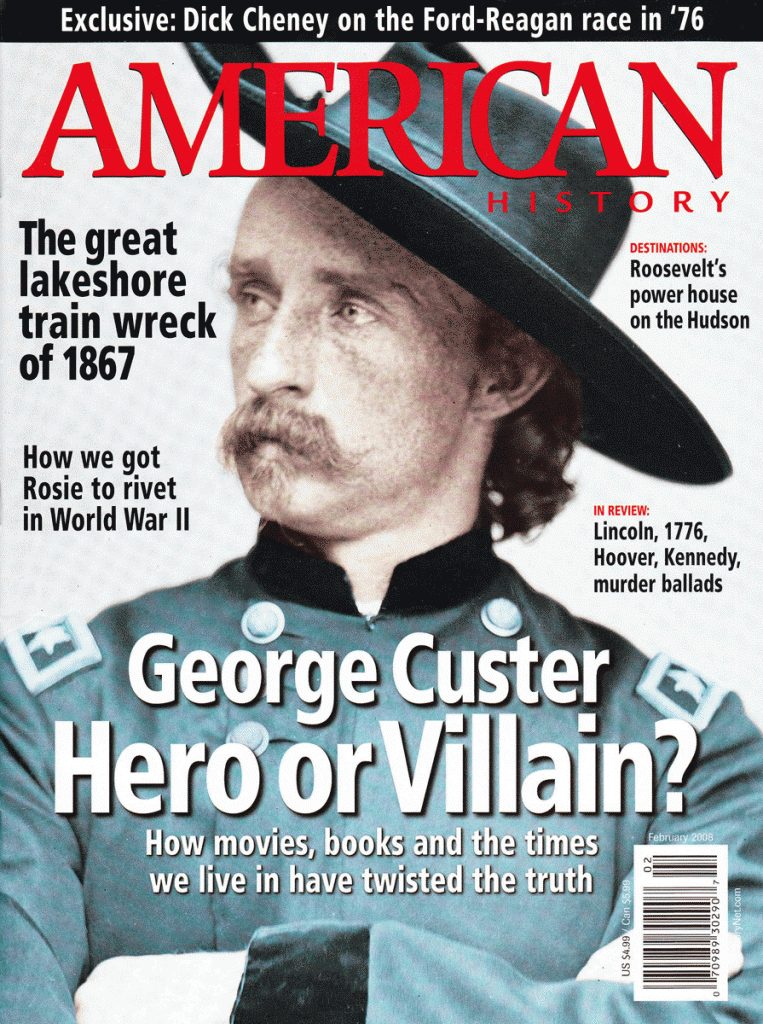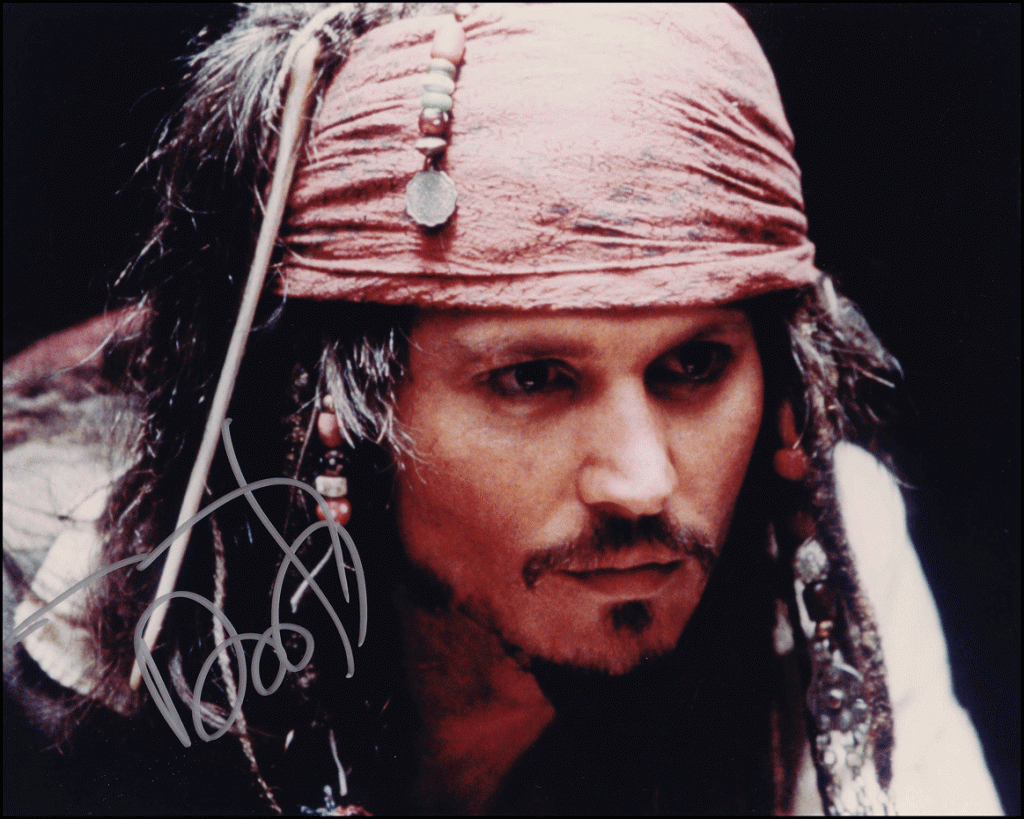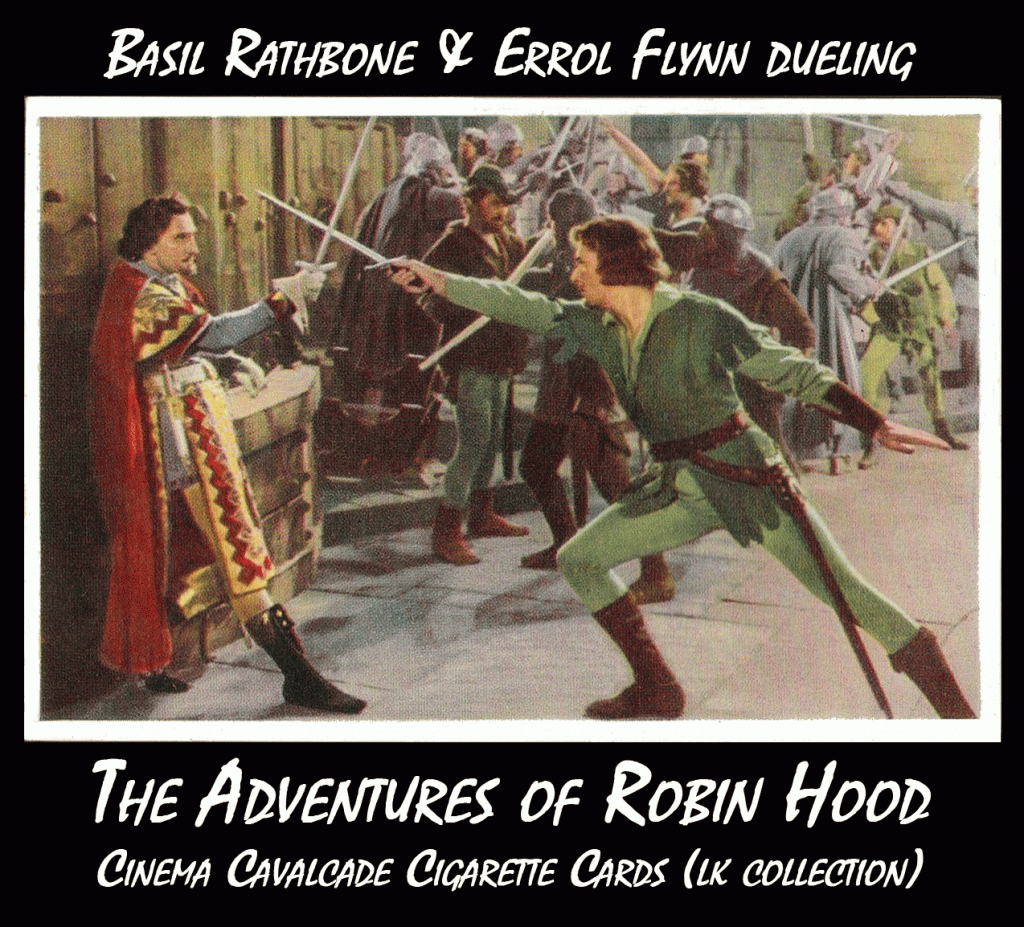Website & blogs © Louis Kraft 2013-2020
Contact Kraft at writerkraft@gmail.com or comment at the end of the blogs
Whoa baby, does time fly. Already we’re racing toward the end of June. By now I’m certain that some of you think that I am too harsh on writers, editors, art directors, and other people who play a part in my writing life. You may be right, but I must stand firm for my vision of my work. At times this means speaking up. And here all I’m talking about are my writing and art projects.
Unfortunately I live in a world that doesn’t take prisoners. … and I have friends—good friends—who also live in this world. Unfortunately there are people in our 2015 world that thrive by destroying writers and publications that don’t agree with their views while creating books and articles that aren’t even bad fiction.
Yes, I am harsh. The reason is simple: What I write I want to be as accurate and as good as possible. I’m slow, and this is one of the reasons why. Is this acceptable? I don’t know, but for me it is.
My life is busy. I have multiple projects, but as you have seen from the last blog I have eliminated time-consuming projects from my writing life.
A writing life
For what it’s worth my writing life has a schedule with deadlines. These deadlines all have long timeframes, and this is an absolute must for me for the reason stated above. Ladies and gents I have learned over many years the effort that is required for me to write hopefully a decent book. … That’s right, I’m only talking about myself here. I’m slow and my editors know this. They also know that I question everything. If I don’t agree with something that has been changed in my text I challenge it (and there’s always research first to confirm what I challenge).
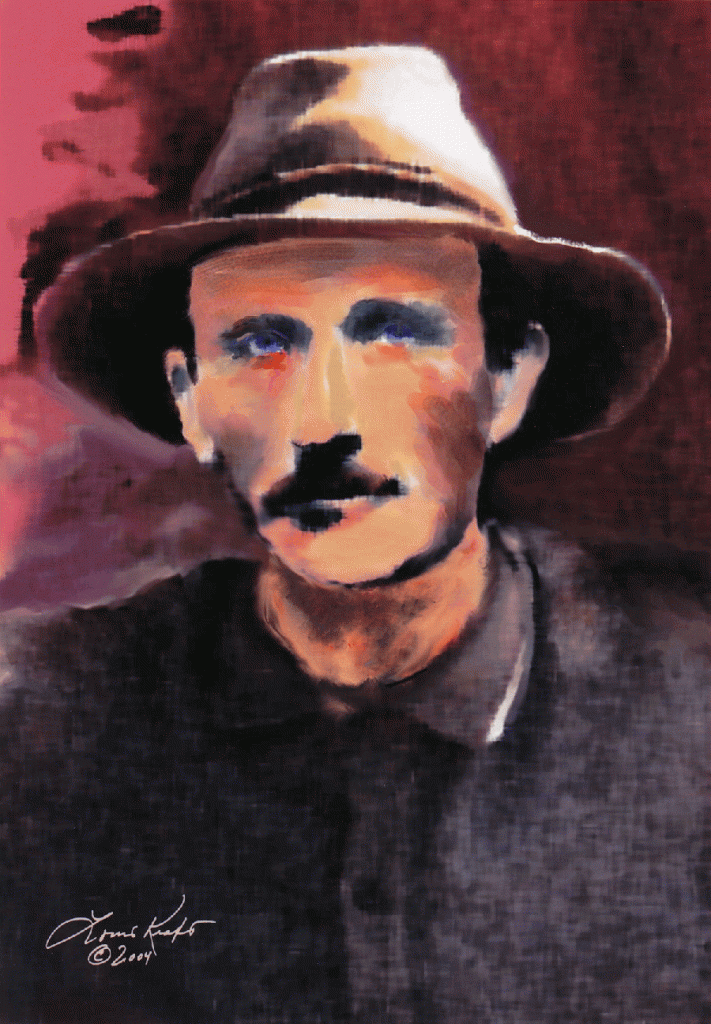
This Charles Gatewood painting is dated (art © Louis Kraft 2004). It has been printed four times, and it has earned needed dollars. Ladies and gents, we both know that I’m not a very good artist, But I keep trying. My best seller, believe it or not, is a portrait of Ned Wynkoop. It has been printed five times, and it has brought in a lot more money. I don’t give up for the simple reason that the efforts can earn additional money, and more important they can illustrate an event that is totally lost to the mists of time. For the record, I gave actress Olivia de Havilland an 8×10 print of this Gatewood painting and she liked it.
I do have a fuse, and at times it is a short one. I love my editors, every one of them except the clown assigned to Gatewood & Geronimo (University of New Mexico Press, 2000). His edit of the book put me into cardiac arrest. I wrote the manuscript and I do like simple language (short sentences when I get away with them, for the simple reason that they help making books page-turners. This edit of G&G angered me so much that I called the editor-in-chief, Durwood Ball, who had jumped upon the book query and stood behind the book every step of the way. Durwood listened to me, he would survive my demands, and we became good friends. For example, this copyeditor assigned to G&G took four or five of my paragraphs and merged them into one. Shorter sentences became long sentences. I wrote the manuscript, but now I couldn’t understand what I supposedly wrote. I had told Durwood that I was going to edit the copywriter’s edit. He accepted this, and I did. Some historians still believe that G&G is the best book that I have written. Maybe, but it’s not my choice. That said, I’m proud of the book for it placed Charles Gatewood on the map; that is it pulled him from the obscurity that General Nelson Miles damned him to for eternity. For the record (and I love the Cheyennes) if I could spend an hour, a day, a week, a month, or a year with an American Indian that I have written about, … It is, and it will always be, Geronimo. He was a magnificent human being (and I don’t give a damn about other people’s opinion of him). I wish I could share the portrait I recently painted of him. I can’t, for the October 2015 Wild West magazine may print it. Honestly, my fingers are crossed that they do. Until I do, and if it is positive, the image is off-limits until the magazine is printed and distributed.
**********

This is the Pailin that I see every morning (and this morning happens to be 17jun2015). Happy, sexy, and ready for anything that I might toss at her. I’m convinced that she thinks that I’m crazy. That’s okay, for crazy is good if it doesn’t hurt anyone. Maybe, just maybe, she’ll give in and learn to swing a blade. Maybe. Hope never flickers out. (photo © Pailin Subanna-Kraft & Louis Kraft 2015)
Although I don’t write for companies any longer, my life comprises a lot more than just research and writing—It also includes four-to-five hours of yard work per week; doing housework (I’m home; why not?); most of the grocery shopping; completing the process of turning the front yard into a desert (ongoing for a long time); creating the new driveway to where Pailin now parks her car (good progress); and finally working on my health (a multi-leveled process that I created over the years, along with recommendations from my physicians; currently this takes close to four hours average per day—I’ll discuss it in the Thailand blog).
For the record, I’m not complaining for Pailin does more than her share of chores. More important, she had negotiated two days off, Wednesday and Thursday (a few weeks back she worked 21 hours on her two days off, and yes I was cursing). Wednesday and Thursday turned into Tuesday and Wednesday. Last week she worked on Wednesday and as of now she only has Tuesday off. This Tuesday (June 23) she goes into work at noon! I use off-color words, and we both know it. I’m biting my tongue, but not hard for there’s no blood squirting. The only plus is that she has made it clear that she really doesn’t want to go into work until the afternoon, and this seems to be working. At least so far. This cuts into my writing time, but it also gives me additional time with my lady.
Yeah, my days are long. They are also very fulfilling and I enjoy each and every minute.
“Geronimo’s Gunfighter Attitude” nears publication
Wild West editor Greg Lalire and I have a draft of the article that we are both good with, and fingers are crossed that there is enough space for the words.

My daughter Marissa Kraft at the Fort Bowie National Historic Site in Arizona on 25jul1996. At the time I was writing Gatewood & Geronimo and she joined me on a 16-day research trip in Arizona and New Mexico. Great times. (photo © Louis & Marissa Kraft 1996)
In late May I completed three edits of the map that Wild West contract cartographer Joan Pennington created from the map that I submitted. I okayed the third draft the last week of May. I have nothing but kudos to say about Joan’s work. She accurately added what I considered key locations in Geronimo’s life that have never before seen the light of day in map form (see the map that I created for Joan to work from: Geronimo preempts the Sand Creek manuscript). It took hours and hours for me to pinpoint three of the locations: 1) The Valenzuela attack on Geronimo’s camp, 2) The Geronimo and Prefect of Arispe near shootout, and 3) The Gatewood confrontation with Lt. Abiel Smith while Geronimo watched.
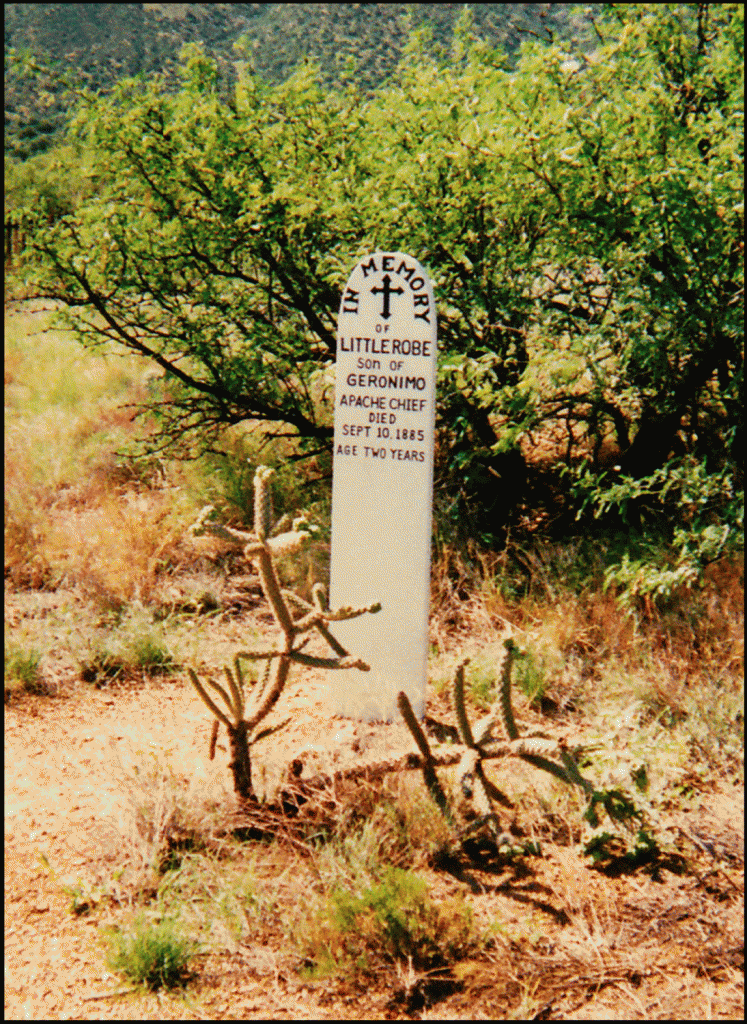
On 25jul1996 my daughter Marissa Kraft and I walked to the Fort Bowie National Historic Site in Arizona. If my memory is decent it was about a mile and a half walk each way. The previous night after she went to sleep the news announced that a mountain lion was seen in the area. That morning I wore a knife and when we started the walk I picked up two large branches from the ground. She asked me why and I told her that the branches could help us walk if needed. “What about the knife?” “I just felt like wearing it today.” It’s a great walk, but I remained alert the entire time but saw no evidence of the cat. We saw this memorial to Geronimo’s two-year old son as we neared the fort ruins. I never checked on the little boy, but if the dating is accurate he most likely took part in the final Chiricahua Apache outbreak from Turkey Creek in spring 1885. (photo © Louis Kraft 1996)
As everything is new with the World History Group and the Los Angeles design group that are calling the shots on the photos, art, and maps there are no guarantees of what will make it into “Geronimo’s Gunfighter Attitude” for the October issue of Wild West. I feel confident that Joan’s map of key Mexican locations in Geronimo’s life will make the issue. Fingers are crossed that my portrait of Mr. G will also be printed.
I have seen the August 2015 issue of Wild West (this is the first issue published by the World History Group) and I want to say up front that the August issue is one giant step forward. I love the look and feel of the magazine! More below on the new Wild West magazine.
I’m working on a bucket list in reverse order, as follows:
- My last play, Cheyenne Blood, ran for five weeks in 2009. Although nothing has been officially pitched this is one place where I’ll never say “Never.” Here are two big reasons why:
• I have a great idea for a play on Errol Flynn.

Johnny B. gave me this first edition of his story of Wild Bill Hickok joining Buffalo Bill Cody and Texas Jack Omohundro on the stage for one season when we got together in Santa Fe in 2005. It is a great character study. What I really like is when Hickok realizes that the flame from his revolver burns the dead actors on the stage. After that whenever possible he bends near a “dead” actor and fires his revolver so that the flame burns the deceased and brings them back to life on stage. Hickok finds his ad-libbing a hoot. It’s a funny bit and I’d like to do it too. I’m not sadistic; just fun-loving, especially with the knowledge that no actors (dead or alive) would be harmed.
• Johnny D. Boggs wrote a terrific story about Wild Bill Hickok joining Buffalo Bill Cody’s theatrical troupe in East of the Border (Five Star, 2004). Since I read Johnny’s novel I’ve wanted to play Hickok. Most of my writing ideas take forever to become reality. For this to happen will take a miracle of selling on my part. Johnny Boggs and director Tom Eubanks if you read this open your ears to me.
I have ceased giving talks. My last talk dealt with Lt. Charles Gatewood finding Geronimo in Mexico in August 1886 and talking him into returning to the United States and surrendering for the last time (Order of the Indian Wars, Tucson, Az., September 2013). See Gatewood’s Assignment: Geronimo.
At the moment it appears that “Geronimo’s Gunfighter Attitude” may be my last article. No others are in progress and I have stopped pitching stories to magazines.
I’m good with the above, and trust me I never hold my breath for something that may never happen. There have been a lot of projects over the years that have gone belly up or never happened. Not because of me, but because of others. When I commit, I commit and deliver. In the acting and writing worlds much happens with great aspirations, but then far too often—Poof … Nada.
The new Wild West magazine, books & changes
First and foremost, the look and feel of the August 2015 Wild West magazine is terrific. This is the first issue of Wild West with the new design since the World History Group purchased the Weider History Group and its stable of history magazines earlier this year.
I like the cover paper and interior paper, which have a different texture (the gloss is gone from the cover). Love the cover makeover! Simple design with a cool new Wild West banner, including “The American Frontier” subhead. I really like the cover art of the young outlaw Jesse James. Artist Robert Hunt created the portrait based upon a 10jul1864 image of the teenager.
The August issue contains five features, and they are well designed with photos and art. A portion of a Thomas Hart Benton mural the artist created for the Missouri state capitol building in 1936 covers the first two pages of “The State of Jesse James” by Jim Winnerman, and shows the James gang robbing a train and a bank. Another feature, “Allan Pinkerton: ‘They Must Die'” by Ron Soodalter also begins with an image (Pinkerton on horseback in 1862) covering the first two pages of the article. But in this article, which deals with Pinkerton’s efforts to end the James-Younger gang’s lawlessness Soodalter’s text begins on the first page in white ink over the dark shades of the image behind Pinkerton’s horse. I think these two pages are really pleasing to the eye. The magazine also prints images that cover a full page. For example: In the Pinkerton article there is three-shot of Frank James sitting between Jesse and Fletch Taylor, who posed for the image in a studio (perhaps in 1867).
I know a number of historian-writers that focus on the Indian wars, and on social media some of them have been critical of the change of hands of Wild West from the Weider History Group to the World History Group. What will happen to their articles? What will be the word count, and it has shrunk for features? Will their articles see print? Heck, what about the Weider History Group staff in Leesburg, Virginia? Will they survive? At the moment it looks as if they will, which is great news for all of us: Them, the freelance writers, and the readers of the magazine.
A few thoughts on change
Change is always nerve-wracking, and I know of what I say for I have lived through it way too often in my writing career. Sometimes I survived and sometimes I didn’t survive. The following are a few examples.
What should have been my first published nonfiction historical piece was accepted by a British history magazine, and it was a feature on George Armstrong Custer. This came about when the magazine did an article on Custer which included publicity photos from the Robert Shaw star turn in Custer of the West (1967) and I wrote the editor telling him that I didn’t write letters to the editor. I then banged the hell out of the article while pitching an article about “The Real Custer.” The editor jumped on the story, but the magazine went belly-up before publication and I had to track him down to get my photographs back. There’s a lesson here; if one publication was interested in a written piece most likely another publication will be interested in it—the writer just has to find another buyer. “The Real Custer” saw print in the December 1988 issue of Research Review. (At that time Research Review paid $100, which was a large reduction from what I would have made from Britain magazine, but the layout and design was much better than the British magazine was capable of doing.)
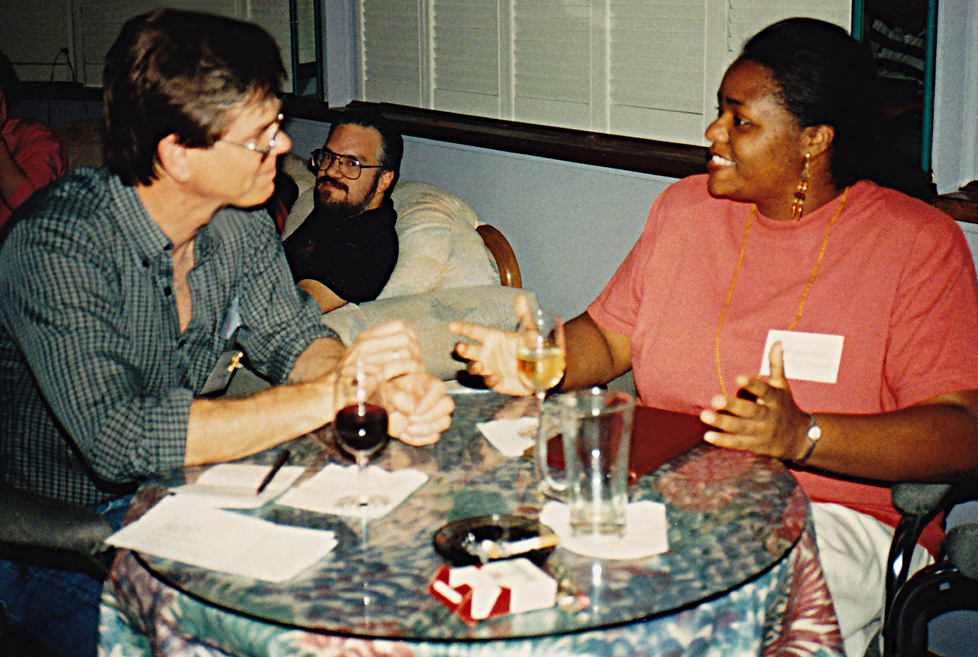
LK with Jackie Johnson in Jackson, Wyoming, at the Western Writers of America convention in 1993 (Jackson Hole is the valley between the Snake River and the Teton Mountains). She liked the idea for The Final Showdown in Oregon in perhaps 1989. I was so dumb that when some three months later my agent asked if I had drafted three sample chapters. Oops! No. Jackie became friends with Marissa and I. We ate together at conventions, saw a play, And I spent good time with her at her office in Manhattan just before the first novel was published. (photo © Louis Kraft 1993)
My second novel was under contract but the publisher decided to drop their western line. I threatened to sue, but my then-agent talked me out of it as she was afraid that she’d be blacklisted and did what she could to convince me that I would be also. I consented but weeks later we parted company. This was a genre western that dipped into Navajo culture and history. I liked it (I still like it), but I never attempted to resell it. Reason: I felt that the story needed more than 65,000 words to tell it properly. It has since waited until I decide when that the time is right to expand it into a full novel. That time is still in the distant future.

LK with a former coworker at Sun Microsystems. Actually I am sitting at the coworker’s desk but he wasn’t present. One or more of my coworkers, people I enjoyed knowing and respected, created this life-sized cutout of this fellow, who might have been on vacation on this day. I believe that the year was 2007, and one of three fellows took this image but I don’t remember who. BTW, I chuckled the entire day. Talk about being vague, … just one of my talents.
The software world is ever changing. Companies appear and succeed or fail, and often they sell out to larger companies (which usually makes the owners rich) or merge with larger companies or large companies purchase smaller companies (a reverse of the above). When this happens, often jobs disappear, and even more so in the 21st century when one job—let’s say a writing job—in the USA becomes two or three or four writing jobs in India or elsewhere. Or perhaps the USA job transfers to only one job in India, and the U.S. company pockets the rest of the salary (and perhaps makes a killing in benefits savings).
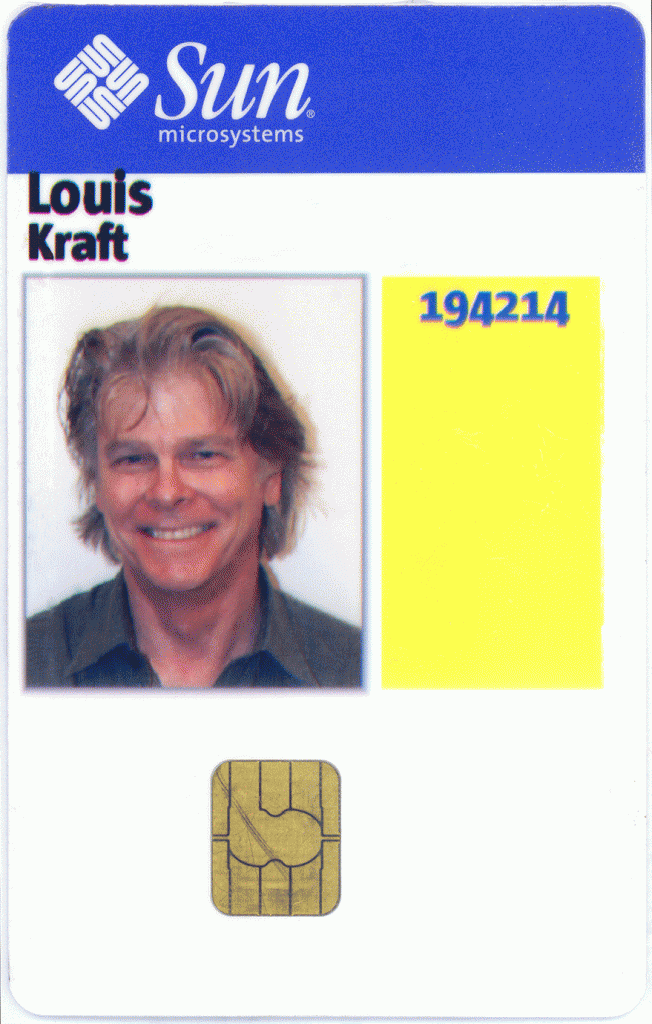
Sun Microsystems bought SeeBeyond Technology Corporation in 2005. If my memory is correct this badge was created that year. Every software company that I worked for had tight security—something that I’ve always appreciated.
When this type of change happens it creates a nervous time, and I don’t care if it is in the space industry or elsewhere. I’ve seen huge cheers when a satellite is shown blowing up on TV news footage and the staff realizes that it wasn’t a satellite that they worked on and that their jobs are safe. In case you don’t know, space failure (and sometimes other IT failure) means that heads will roll as millions upon millions of dollars suddenly vaporize.
Don’t forget that when a company begins to flame out and spiral toward oblivion such as Sun Microsystems, or when a powerhouse (no example, … to protect the innocent—yours truly) operates on lies (I have proof but have no desire to go to war, a war I could never win regardless of what the documentation proves), heads roll and these deaths are not based upon quality of performance.
Back to Wild West magazine and other publishers
My hopes and prayers are that the staff in Leesburg, Virginia, survive the magazine transition from the Weider History Group to the World History Group. At this point in time it looks good for all concerned.
Will any of the above affect me? Doubtful. Life is what it is, and it always moves forward. Do I lose? Probably. No more publicity wherein I receive money for my efforts. Will I regret my decision as I move forward? Probably. Hey guys, I like magazine articles and have always done whatever was necessary to make the articles as good as they could be.
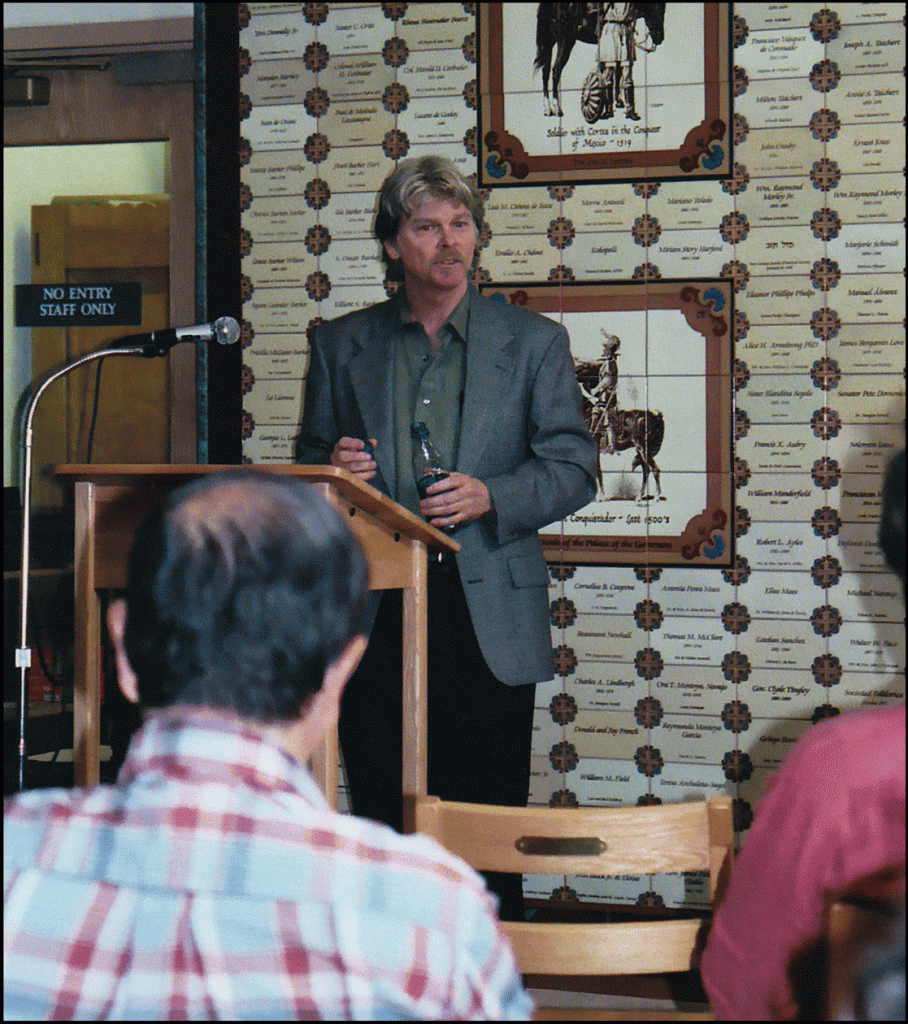
LK talking about “Cheyenne Indian Agent Edward Wynkoop’s 1867 Fight to Prevent War” at the Chávez History Library (Santa Fe, N. Mex.) on 15sept2004. The reason I have used this image here is because my views on race and Wynkoop have garnered me anger and hate over the years. At times when I’ve appeared—let’s say in Colorado—people will turn their backs to me. The Discovery isn’t about racial hatred, but there is a crime in the story that isn’t racial, and yet it is. Bob Goodman and I are happy with our manuscript. At the same time we are aware that the content may anger people. The story of my life. Hell, ladies & gents, if I can’t push you as far as I can, why bother? (photo Louis Kraft 2004)
Yes, but I have always angered staff members at publications. It wasn’t because I wanted to upset or threaten staff members but rather because I wanted to challenge them and myself to create the best story and design possible. Egos are involved, and often people don’t realize that I have a lot of experience in what they consider their expertise. They don’t like being challenged, for as far as they are concerned they know what is acceptable. They don’t want to push words or a design layout to the extreme; they just want to get their job done and go home.
I’m sorry, but for me this isn’t acceptable.
And the above isn’t limited to magazine articles, for it extends to talks (which I believe must turn on listeners and not put them to sleep) as well as books (which for me are my main focus). Book production teams think a lot less of me than magazines or those who have been brave enough to allow me to speak for their events.
The bottom line, and I’m talking about anyone and every speaking engagement, magazine, or book publisher that has hired me. All I care about is the best product possible. That’s it; I’ve never said or done anything to hurt you. Never. The final product, be it a talk, article, or book is and has always been all I care about.
For those of you who have hired me. Thank you, and I say this from the bottom of my heart. Thank you.

Pailin and LK returned from an extended research trip to the West on 16oct2014. The next day we drove to the Western History Association convention in Newport Beach, Calif. I knew that John Monnett would be there (John and his wonderful wife Linda welcomed us with open arms at their home in Colorado during the trip). I wanted to see him. I also wanted to see Chuck Rankin (editor-in-chief at OU Press), had hoped that Durwood Ball who is now editor of the New Mexico Historical Review and a good friend would be present (he was), and spent prime time with Clark Whitehorn (current editor-in-chief at U of NM Press). … Pailin saw the Wynkoop book, which Chuck and OU Press still push, and she snapped this image. … Good news to report from OU Press. Managing editor Steven Baker recently contacted me and Ned Wynkoop and the Lonely Road from Sand Creek will be published in paper in mid-July. (photo © Louis Kraft & Pailin Subanna-Kraft 2014)
As for my book publishers present and in the future, you know me. But if you don’t, it’s on you for not doing your research and learning. I’m certain that you want the best book published, and I’m with you on this 100 percent. Know that when you contract with me that I intend to do everything possible to ensure that the book that you and I have partnered on will be the best publication possible. You need to know that I will take an active part in the entire publishing process. There are no shortcuts for me, and I do know the process (and have lived it for some twenty plus years in the software publishing world, and I’m not just talking about my freelance publishing experience, which is thirty years). I have actively made the choice to eliminate pieces of my writing life as I consider books the major part of my artistic world. The future is out there and I have made my decision of what my future is.
Book publishing departments I’m not your enemy; I’m your friend for my goal is the same as yours. Don’t get upset and don’t attack, for I’m working with you to get the best possible product printed. This has nothing to do with ego and has nothing to do with me trying to show you up. I’m a part of your team, and everything I write, submit, or suggest is to improve the final product. That’s it, … that’s all.
TV, swords, Michael Parks, Errol Flynn, and George Armstrong Custer
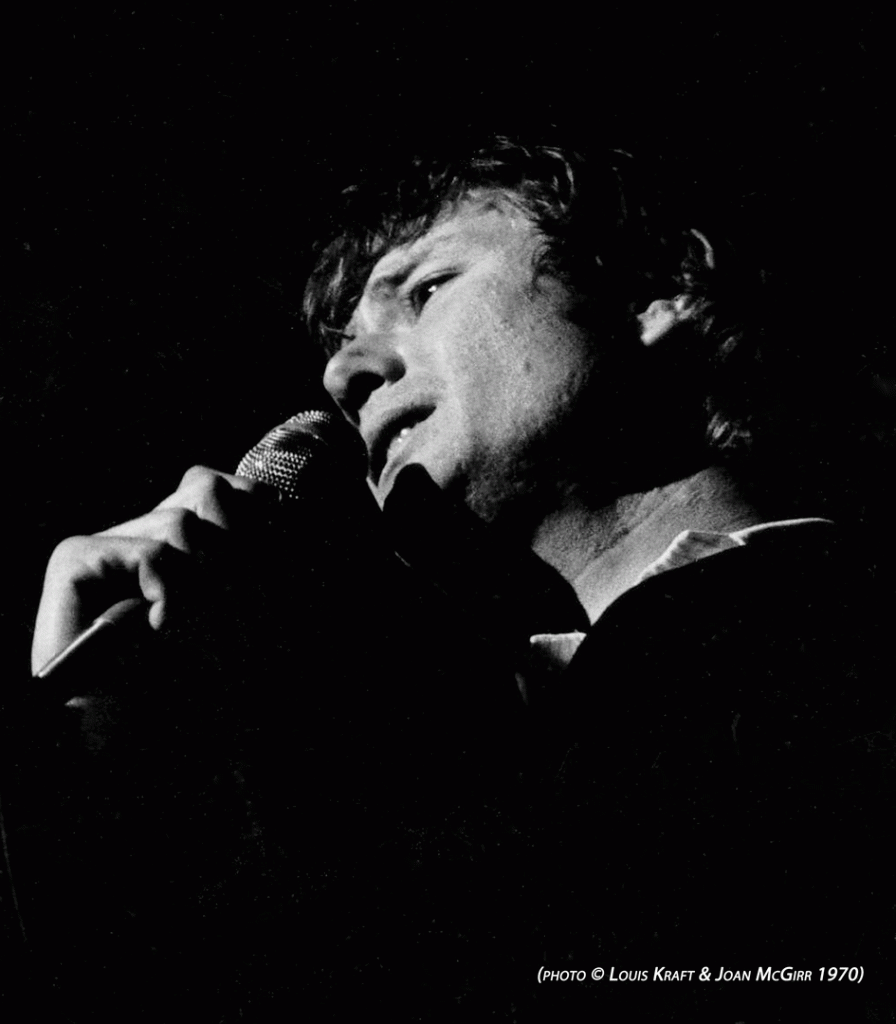
In the pilot for Then Came Bronson Michael Parks sang “Wayfarin’ Stranger,” which is my favorite song of all time, with Bonnie Bedelia singing backup. BTW, the pilot for the TV series was released in Europe as a feature film. The producers quickly realized that they had another element in the development of a loner coming to terms with life as he explored the western USA on a Harley Davidson motorcycle, and that was adding a Parks’ song to each episode. It worked, for Parks sang country blues like no one before him (and to my knowledge no one since). Michael apparently prefers blues linked to jazz (moving away from the music that I love). This image of Parks, which was taken on 22may1970 (and is completely copyrighted, and trust me you don’t want to steal it for in court you will lose) was shot at the Santa Monica Civic Auditorium. I had paid good money for what I thought would be good seats. No! We were halfway back in the auditorium. I had a bright idea, and suggested to my guest that we kneel down in front of the first row and lean against the stage. We did this, weren’t asked to leave, talked with Michael, and obtained some great images from his concert. I would luckily work with Parks in the future, and got to know him. (photo © Louis Kraft & Joan McGirr 1970)
I’ve been around for a long time, and over the years I haven’t been impressed with TV shows. There are only four TV shows that have caught my interest over the years. Michael Parks’ Then Came Bronson (1969-1970); The X-Files with David Duchovny and Gillian Anderson (1993-2002); The Mentalist with Simon Baker and Robin Tunney (2008-2015) may be my favorite of all time, but this is a toss up with Then Came Bronson; and The Musketeers (2014-2015) with Luke Pasqualino (as d’Artagnan) and Santiago Cabrera (as Aramis). Other than Then Came Bronson (which I tried to watch, but unfortunately couldn’t catch all of the episodes), I haven’t watched any of these programs when they aired. I saw a handful of episodes of The X-Files and maybe four or five episodes of The Mentalist. My viewing TV count of The Musketeers is zero. Great plots, actors, and series, but luckily none of them had (or have) counted upon my loyalty to survive.
Something needs to be said right here. I’m only writing about one actor, Errol Flynn (and in the first volume Olivia de Havilland is a major supporting player). If ever I were to write about another actor, it would be Michael Parks. He was a rebel who could act, and best yet he dared to stand firm for what he believed. His story should be told. I luckily got to work with Michael in 1978 on a TV film that hoped to lead to a series (Turnover Smith, Turnover Productions). It aired in 1980, but didn’t lead to a series, and that is too bad. Good times for LK, and there are stories to be told here, among which is the rap against Parks for what I saw it was pure bullshit. … Michael is still working and looks physically great. That said if ever I am to follow up on this book idea I need to get off my rear end and re-connect with him. Now.
I presume that by now you know that I love the sword and swashbuckling. At the beginning of this year I was in a Best Buy (which I think may disappear in the not-too-distant future; another victim of changing times) and saw the first season for The Musketeers on sale for ten bucks. It’s a BBC production and I hadn’t heard of it or any of the actors.

DVD cover for the second season of The Musketeers. From left on top image: Santiago Cabrera, Howard Charles (as Porthos), Luke Pasqualino, and Tom Burke (as Athos).
But how can you go wrong with Alexander Dumas’ The Three Musketeers. The story is a classic. Although Errol Flynn did a recording of one of the ongoing plot lines he never played d’Artagnan on film. Too bad, for at the time of Flynn’s The Prince and the Pauper (Warner Bros., 1937), he would have been perfect casting for this role. Ten bucks. Hell, if it was the worst TV show that I ever saw it would certainly be worth the expense just to study the swordplay (good or bad). This comes from a cynic, for easily 90 percent of the swashbuckling productions that I’ve seen on film or on TV are little more than jokes. Poor scripts, bad or low budget production values, and worse—piss-poor acting and swordplay. Yeah, I’m a cynic for easily nine out of ten films or TV productions that I have seen are an embarrassment. They aren’t classic, they aren’t good, and I don’t give a damn how much money they earn, or don’t earn (for profits mean nothing when talking about quality). Apples and oranges, no more and no less.
And this carries over onto the stage. After Dr. Kildare (1960s TV series) Richard Chamberlain went off and studied acting. He became a good actor, and since he chose to be classically trained he would soon play leads on stage and in historic films, TV movies, and mini-series. A number of them would be swashbucklers and eventually he landed the role of Aramis in Richard Lester’s The Three Musketeers and The Four Musketeers. Two films shot at the same time but then split into two films. That’s right two films for the price of one. The actors didn’t agree, took the producer to court and won a second salary for their efforts. I agree with this judgment. Chamberlain, Oliver Reed, and Michael York, among others, excelled. The films are exciting, and I like them. However, if any of these actors attacked me and thrashed around with their swords as they did on film I would have simply stood there and watched them slash and swoosh with their rapiers and then would have simply extended my arm and pierced their hearts without raising a sweat. Adios amigos. Ve con Dios (Go with God).
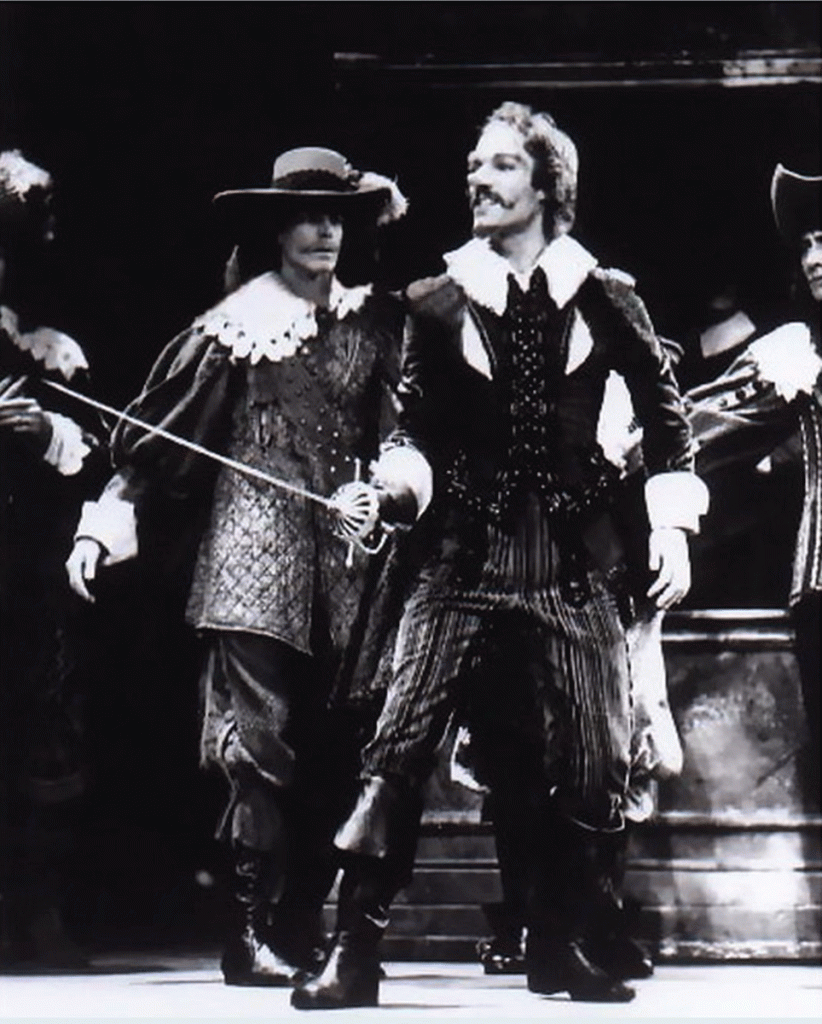
A publicity photo from Chamberlain’s less than spectacular performance as the world’s greatest duelist at the Ahmanson Theatre in Los Angeles in 1973.
The bottom line: I saw Chamberlain play Cyrano de Bergerac on stage at the Ahmanson Theatre in Los Angeles (eighth row center) in October or November 1973 (I also saw Mr. C play Henry IV in Shakespeare’s Henry IV, Part I in 1972 at the Ahmanson). Cyrano has a big nose; he is also the greatest duelist in France. This is a classic play, and every actor who swings a blade wants to play Cyrano. The key duel in the play begins and it is fought as if the actors hold foils (parry and thrust; no slashing) even though it looks as if they hold rapiers. It is boring (and I’m being kind here). Chamberlain’s blade is broken. Oops! I don’t know if we call performers who have zero lines or only as few extras on the stage or not. Anyway, an extra or an actor with a minimal role walked to Chamberlain and handed him his blade so that Richard could continue the duel. Hell, he should have flipped his blade to Chamberlain and Mr. C. should have caught it with a flourish before charging his opponent. No such luck. The dull duel continued and ended as expected and I wanted to go to sleep. I can name two Chamberlain performances that I think the world of; as mountain man Alexander McKeag in the miniseries Centennial (1979) and as Father Ralph de Bricassart in the miniseries The Thorn Birds (1983). Chamberlain is a good actor, and he has proved this time and again. Unfortunately I never worked with him.
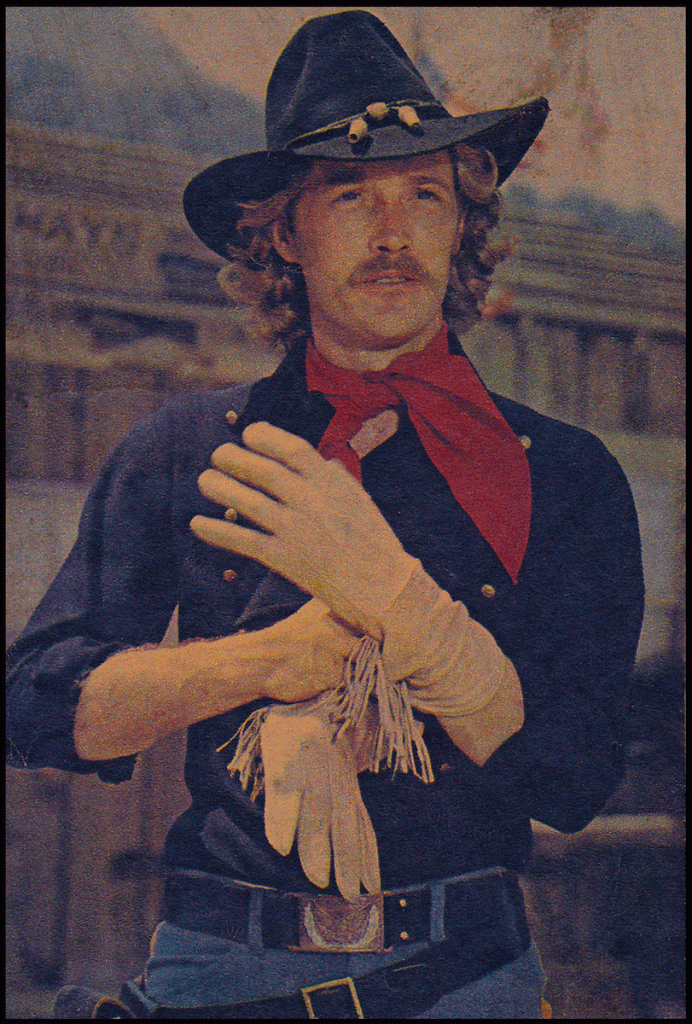
Wayne Maunder as George Armstrong Custer in Custer (or The Legend of Custer, 1967; 20th Century Fox pilot plus 17 episodes). The pilot was a joke. I don’t think I’ll waste any words talking about it and the TV series was worse. That said Maunder played the ideal Custer, as this newspaper clipping from the 1960s shows. Maunder is wearing a cool hat; methinks that perhaps I need Baron Hats in Burbank, Calif., to create it for me, … or should my next hat be Flynn’s hat used in the early scenes of Dodge City (Warner Bros., 1939)? Decisions, decisions. What’s a writer to do?
What do I mean? Simply, most productions have B-film scripts and most of the actors aren’t A-actors. Forget the production value, for often there isn’t/wasn’t any. Swinging a blade (like riding a horse on film) requires that the actors learn how to do it. Unfortunately most don’t. A perfect example of this is Gary Cole playing George Armstrong Custer in the mini-series based upon Evan S. Connell’s The Son of Morning Star (Republic Pictures Television, 1984). Connell’s book was loaded with factual errors (Over 150 and counting in the first printing; I believe that most of them were fixed in subsequent printings), but he was a good writer and could tell a story. His book, published by an obscure publisher, became a national best seller and did wonders for Custer and the American Indian wars. What can I say about the mini-series? Many of the supporting actors were much better than Cole, who had no clue of who Custer was. Ditto Rosanna Arquette, who played Libbie Custer. She actually stated that she didn’t respect the historical figure she portrayed. Too bad, but hell I don’t respect her, and I spent perhaps four weeks working with her and Richard Thomas in a TV film remake of Johnny Belinda (1982). Good money for me, plus Thomas and I became friends, which would almost impact my screenwriting career—almost, but no cigar. And Thomas tried, for he liked several of my screenplays but didn’t have the clout to get enough money people interested to raise what was needed to move the scripts into production.
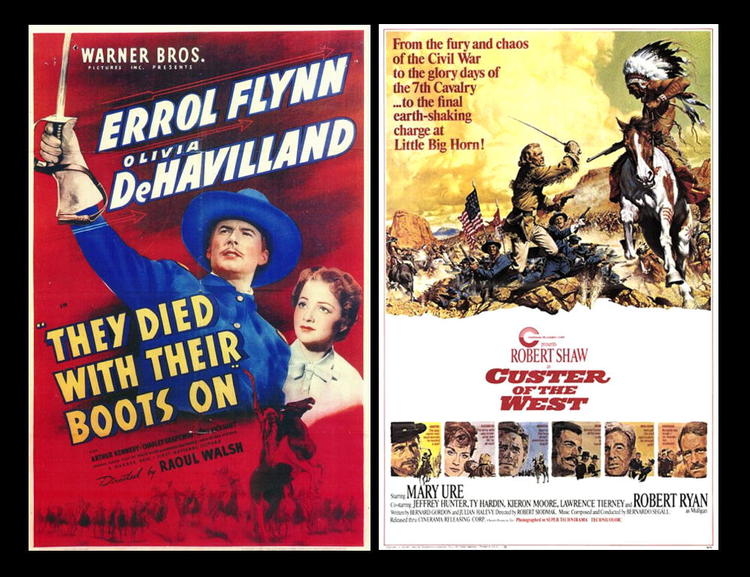
Errol Flynn’s They Died With Their Boots On (Warner Bros., 1941) and Robert Shaw’s Custer of the West (Cinerama Releasing Corporation, 1967) played at the Beverly Cinema on Beverly Blvd. in Los Angeles on June 14 & 15, 2015 (and this was the theater’s ad).
They Died With Their Boots On (Warner Bros., 1941) is one of Flynn’s best films and it constantly juggles with Adventures of Don Juan (Warner Bros., 1948), The Sea Hawk (Warner Bros., 1940), and Gentleman Jim (Warner Bros., 1942) for EF’s best performances on film. His role as George Armstrong Custer links with the boxer Gentleman Jim Corbett, the lover and swordsman Don Juan de Maraña, Captain Geoffrey Thorpe (read the pirate Francis Drake), and the aristocratic Soames Forsyte (in The Forsyte Woman, Metro-Goldwyn-Mayer, 1949) as roles that he wanted to perform.

I had taken some photos of the Beverly Cinema in daylight as the box office opened at six o’clock (got one or two good daylight shots that I will use in the future), but decided that I wanted a night image. More dramatic. (photo © Louis Kraft 2015)
They Died With Their Boots On (TDWTBO) is a great film that played a major role in my future. I’ve always liked Robert Shaw, and he made some good films, including Jaws (Zanuck/Brown Productions, Universal Pictures, 1975), and The Deep (Columbia Pictures, 1977). Unfortunately Custer of the West isn’t a good film. Let’s just flip that statement, Mr. Shaw played Custer in a bad film.
On Sunday, June 14, 2015 I saw TDWTBO the Beverly Cinema. A good time as I got to hang out with a friend, something that time and circumstances often prevents. We saw Flynn’s Custer on the large screen for the first time in a long while (for me, at least a decade and maybe more). Afterwards we talked about Custer and Flynn, and as we got trapped in a major traffic jam after seeing Flynn’s Custer (we didn’t stick around for Shaw’s Custer) it gave us more time to chat. Actually Highland Avenue was a total mess and we detoured to the south before moving east to attempt getting out of LA via Laurel Canyon.
BTW, I hate this 1941 Warner Bros. one-sheet of TDWTBO. In February 2008 American History published a feature of mine (“Custer: The Truth Behind the Silver Screen Myth”) that compares Flynn’s Custer to the real GAC, and the findings are surprising (this was the best of three articles I wrote about the comparison: Errol & Olivia will deal with this in detail). The art director for American History clipped an oval of Flynn from this one-sheet (see image above) and used it in the article. I hated it and fought to have it removed. I lost. That said this is one of the best articles I have ever written.
Let’s pick on Johnny Depp and his Captain Jack character.
Johnny’s a good actor, and he takes chances. Period. Unfortunately he didn’t learn how to swing a blade for what will probably be the character we remember him for playing (and he’s made four Pirates of the Caribbean films, and there’s a fifth on its way to release). I like the first film a lot for it was inventive, had a few good (and non-cliché characters), and it grabbed my interest. Depp couldn’t sword fight, and neither could the insipid young actor who played the love interest (he’s not worth mentioning). It would get worse in the following three Pirates films (and it is painfully obvious that Depp isn’t doing any sword fighting). I’m picking on Depp, but he’s not alone. We can go back to a pretty big film star from the golden age of film (the 1930s and 1940s and 1950s) and look at Robert Taylor’s swashbuckling films. Guess what, Mr. Taylor wasn’t doing much with a blade either.
Hey, the bottom line on film is: If you can’t see the actor’s face on the screen,
the actor didn’t perform what you are watching. I don’t care if they are
naked or are riding a horse or are swinging a blade. To repeat, if you
can’t see their face they didn’t act in the scene (or at least not all of it)
that you are watching. Simple; a film double or a stunt double
played the scene (and I know what I’m talking about).
Ladies and gents, there are only a handful of actors (heroes and villains) who could wield a blade. This is a very short list. Of the actors from the golden age of film (Errol Flynn, Douglas Fairbanks Jr., Stewart Granger, Basil Rathbone … four fellows; and maybe the dancer Gene Kelly and heartthrob Tyrone Power; I’ll have to check Kelly but other than The Sun Also Rises, 20th Century Fox, 1957, I have none of Power’s films in-house). That’s it. From the 1960s to the time of Richard Lester’s series of swashbuckling films in the 1970s, zero. Lester’s actors, who were mostly English (Oliver Reed, a good actor at all times; Michael York, Frank Finley, and Christopher Lee) and the American Richard Chamberlain worked at preparing for the Lester films.
Basil Rathbone said in a recorded interview that, “I could kill Mr. Flynn anytime I wanted.” (I don’t know if this quote is accurate but it is close.) Really? I chuckle over this every time I hear or read the quote.
Mr. Rathbone is stiff on film, and it is obvious that he is/was concentrating on what he learned in his fencing lessons (and according to him, he studied the sword for years away from the studios). Sword fighting—real sword fighting—is considerably more than learned technique. It is taking what you have learned and using it to not only stay alive but to disable or kill the person attacking you. In film, the actor must sell this to the audience, and Flynn could do this. Knowing Flynn’s life cycle intimately I’ll take him any day in a real duel to the death with Rathbone. … But Rathbone does hit the mark with his words of his capability to kill a fellow actor but we must wait until the 1970s and Lester’s swashbuckling films for here the movements by the swordsmen are so large and exaggerated that Mr. Rathbone could have easily eliminated Chamberlain and the other heroes without breaking a sweat.
Too bad, … I guess, as I like Lester’s two Musketeer films and have nothing but praise for his Crossed Swords (a much better retelling of Mark Twain’s The Prince and the Pauper than Flynn’s 1937 version with Oliver Reed playing Miles Hendon). I like Reed’s acting, and in my humble opinion his Miles Hendon is the best role he played. Totally convincing.
Gunfights with a pretty lady …
I hope that my schedule as listed above doesn’t throw you off or give you the wrong impression. I’m thrilled with my life. I have Pailin, hopefully Marissa, and my writing. That’s a lot. I’m thrilled and very happy. What more could a man ask for?
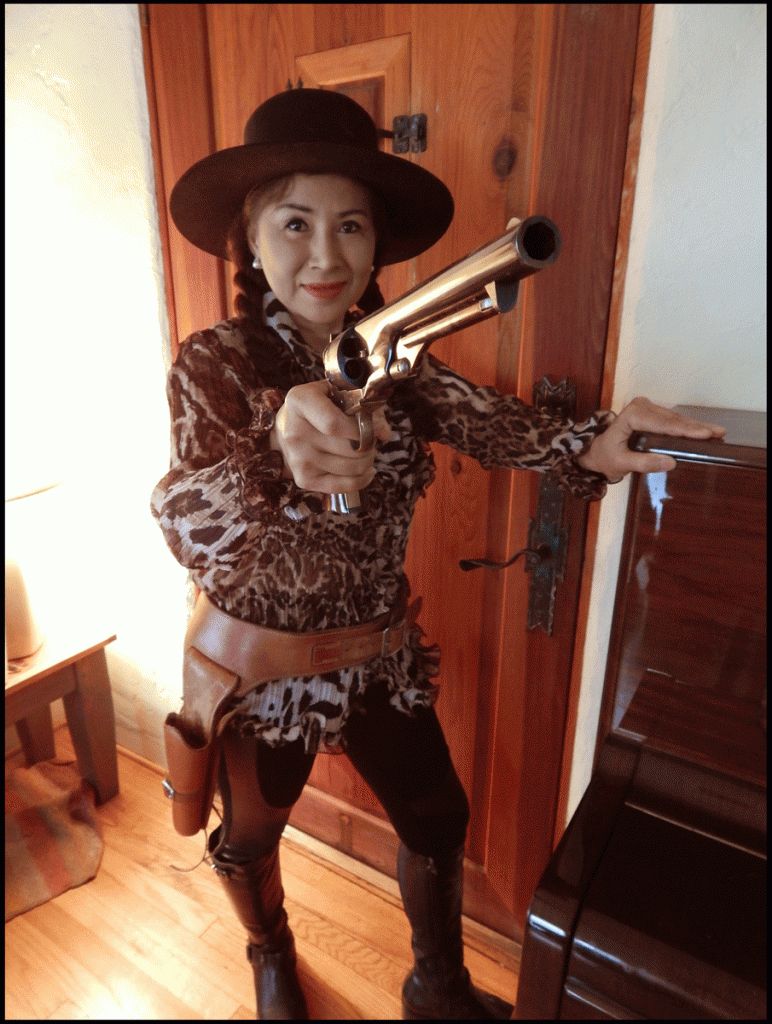
Oh yeah, this is LK’s pistol-packin’ lady at Tujunga House. This is not a Photoshop enhancement. I’ve been seeing a lot of people on social media blame this great program for doing things that it didn’t do. Just so you know, I’ve been using Photoshop since the mid-1990s and it is my favorite program. This image was created in the camera and is a total operator error by LK. That’s right, yours truly messed up big time. I had no intention of turning the 1860 Army Colt into a canon or of shrinking Pailin into a dwarf. That said, I had to share this image as Pailin and I laugh every time we look at it. (photo © Pailin Subanna-Kraft & Louis Kraft 2015)
Pailin is game for almost everything. Almost everything, but not sword fighting. Never say “never.” Trust me, for I have no intention of giving up trying to get her to cross blades with me. Someday I’ll get my way. When that time arrives I’m certain that she’ll enjoy herself and ask what took me so long to get her to change her mind.
How many of you have a shootout deep in the night when your lady returns home? Sometimes she shoots me; sometimes I shoot her. … With our fingers, which become pistols when we see who has the quickest draw or who exhibited the best stealth on any given night.
“Bam, bam, bam!” Pailin yells. “I got you!” I grab my chest and fall against the wall before sliding to the wooden floor, or Pailin grabs her stomach and slumps onto Saltillo tiles. This gunfight could have happened on a boardwalk in early Denver or in a former hacienda outside of Santa Fe.
 Recently, after working on balance and strength while studying The Mentalist, I sat in a leather chair beside the piano, which is to the left of the front door, while I iced my feet. The night was early; before ten-thirty. I heard a click. Or did I? All it took was a split second. Too late—too late … before the sound registered. I fired with my left hand, but Pailin had opened the door, saw where I sat, and shot before I did. She smiled as she added another notch to her revolver.
Recently, after working on balance and strength while studying The Mentalist, I sat in a leather chair beside the piano, which is to the left of the front door, while I iced my feet. The night was early; before ten-thirty. I heard a click. Or did I? All it took was a split second. Too late—too late … before the sound registered. I fired with my left hand, but Pailin had opened the door, saw where I sat, and shot before I did. She smiled as she added another notch to her revolver.
It is always different, always. Not long back I prepared for bed and I heard her car pull into its new parking place behind the house. I raced for the kitchen and waited in darkness. A minute, perhaps two or three passed before I heard Pailin enter. She entered the computer room and carefully leaned through the archway. What she saw confirmed that I wasn’t in one of two possible locations. She slowly stood upright from her crouched stance. I stepped from the darkness behind her and fired, “Bam-bam-bam.” She turned around, laughed, and dropped onto the tile.
My favorite happened not too long back. I had already gone to bed, but always leave a light on in the bedroom so that Pailin can see. I hadn’t gone to sleep when I heard the front door open. I didn’t have much time and quickly stuffed a bunch of pillows under the blankets to hopefully represent where I slept. I then tiptoed to the right of the door entry into the bedroom. Leaning against the wall I waited for when I would shoot my pretty wife. HA!!! … And for those of you who live in dangerous areas or who write fiction (or fact) take note for what follows. I heard Pailin move through the archway and slowly, carefully step toward the bedroom. Seconds ticked by, but there was no sound, and yet I knew that she had to be moving forward. No matter, for as soon as she stepped through the doorway I’d shoot. So much for best laid plains, for Pailin leaped into the bedroom as she whirled to her left and shot me. Afterwards I asked her how she knew where I was. She pointed at the mirror above a small table that faces the doorway. She had seen me lurking and waiting to ambush her as soon as she stepped into the hallway. … Talk about feeling like a tenderfoot. How would I have survived in Dodge City? Probably not. I would have been an easy mark for John Wesley Hardin.

LK turning and fanning his revolver at PS-K in Tujunga House on 18jun2015 (photo © Pailin Subanna-Kraft & Louis Kraft 2015)
One more gunfight. At the time of this shootout I do believe that Pailin had more notches than I did. I’m the man. I’m Wild Bill Hickok, I’m Doc Holliday, … I’m supposed to win. And I wasn’t. I decided to plan our next engagement. When Pailin hadn’t arrived home by eleven and I was still awake, I decided what I’d do when she arrived. I pulled one of the chairs out from the dining room table and went back to bed. I dozed but couldn’t drift into a good sleep. Nearing the midnight hour the headlights of Pailin’s Honda caught my attention. I reacted slowly. Finally it registered that she had arrived. I stumbled out of bed and hustled to computer room, just as I heard a key in the front door. I ran to the dinning room and struggled to get under the table. I waited in the darkness. Minutes passed. Where was Pailin? I knew, while not knowing. She stalked me but everything came up blanks for her. Finally she walked into the kitchen and turned on the light. She then stepped into the dining room and placed one of her packages on the table before returning to the kitchen. I knew that she intended a careful search and didn’t want to wait. I pushed the chair with its back to the kitchen and opened fire. She turned, took the blanks and fell backwards against the archway to the laundry room before slowly dropping to the tiles. “You’re bad,” she whispered as she laughed. “You’re bad.”
After all our gunfights we laugh and hug and kiss. Great fun, and best of all it adds another level to our relationship.
Upcoming deadlines & comments
The Discovery still dominates my life (and will for some time yet), but some of my tasks on my plate have become inflated, and they shouldn’t be (see below). I had initially misjudged how long it would take me to write a character-driven medical-legal malpractice thriller (based on Dr. Robert Goodman’s story). As the plot stretches from the early 1950s to the early 1970s, the novel is a period piece, and as such has required a lot of research on my part to keep the place and time accurate. For example, the California 101 freeway, that begins east of downtown Los Angeles, cuts through the Cahuenga Pass and into the San Fernando Valley (BTW, if you don’t know the “Valley” is a major piece of both the city and county of LA), before moving northward to Ventura and Santa Barbara counties. Bob had the lady who would give life to a major player in the plot riding on this freeway in 1952. One problem, the freeway hadn’t been completed yet.
The Discovery
Before talking about The Discovery, I want to say something about Bob Goodman. I’ve known him for almost 25 years and he has played a major role in my health. Over time we realized that we liked each other and our time together began to include subjects other than medicine. Beginning in 2010 I began doing writing consulting for Bob, and in November 2013 he asked me if I wanted to partner on The Discovery. Although I didn’t know where his manuscript was heading I was familiar with the first 100 pages. I liked the story idea and its potential and agreed (but there was an extra incentive—I needed money to pay for a surgery I didn’t know about). This decision has cost me a lot of time in the last year and a half but I’m thrilled that I accepted Bob’s offer for I think we have a unique story that will be a page-turner. … I had been considering a major return to fiction and The Discovery has become the perfect starting point. I couldn’t be happier with our collaboration, and what I now know is getting close to the final product.
Disclaimer: If The Discovery were a feature film it would carry an R rating.
**********
I thought I had begun my polish of The Discovery on 21may2015 (I had hoped to start it in April but I had not yet collected the reviews I requested). That said, I figured I had an outside chance of finishing my polish early in June.
No!

LK walking on the San Diego coast when the sea and beach are fogged in. This is one of my favorite things to do—having the California coast almost to myself. The beach is empty as it usually is in early morning (and sometimes in the evening), and my companions are the roll and sound of the incoming sea. I’m at one with me, and this is where I want to be. I can smell and watch and think, and this is a glimpse into my writing and real world. A great friend of mine, George Carmichael, took this image. I lost George in spring 2014, and I still struggle with his moving on. We met at a fiction writing class at UCLA in 1997 and we were at loggerheads. Who could have guessed that for the rest of his life we’d become great friends. I need to talk about George. Soon. This image is full frame and is as George shot it in March 2001. (photo © Louis Kraft 2001)
On 23may2015 I began to slowly polish chapter 9, which is the introduction to Greg Weston, who is a key player in the story. The chapter heading states Motor Avenue, but on the first page Weston is walking toward the deli that he often visits with his dog. He is walking on Pico Boulevard, which is a major east-west street in Los Angeles.
Yikes! How did I miss this? Motor Avenue starts at (or dead-ends at Pico Boulevard, at the Fox Studio, which was formerly 20th Century Fox). Moving south Motor Avenue cuts through a golf course and then turns west before meandering west and south. When a street name that Bob had created and I discovered didn’t exist anywhere south of the golf course he told me that he knew the area and it was perfect for the story. We decided to go vague on the street name for Weston’s house. But the house and its location (as is key in later chapters) was two short blocks from a deli where Weston is a semi-celebrity (again, this is on LK, for I totally missed Weston walking on Pico Boulevard at this point in the story, and Pico was in Bob’s text that I used as an outline for the manuscript).
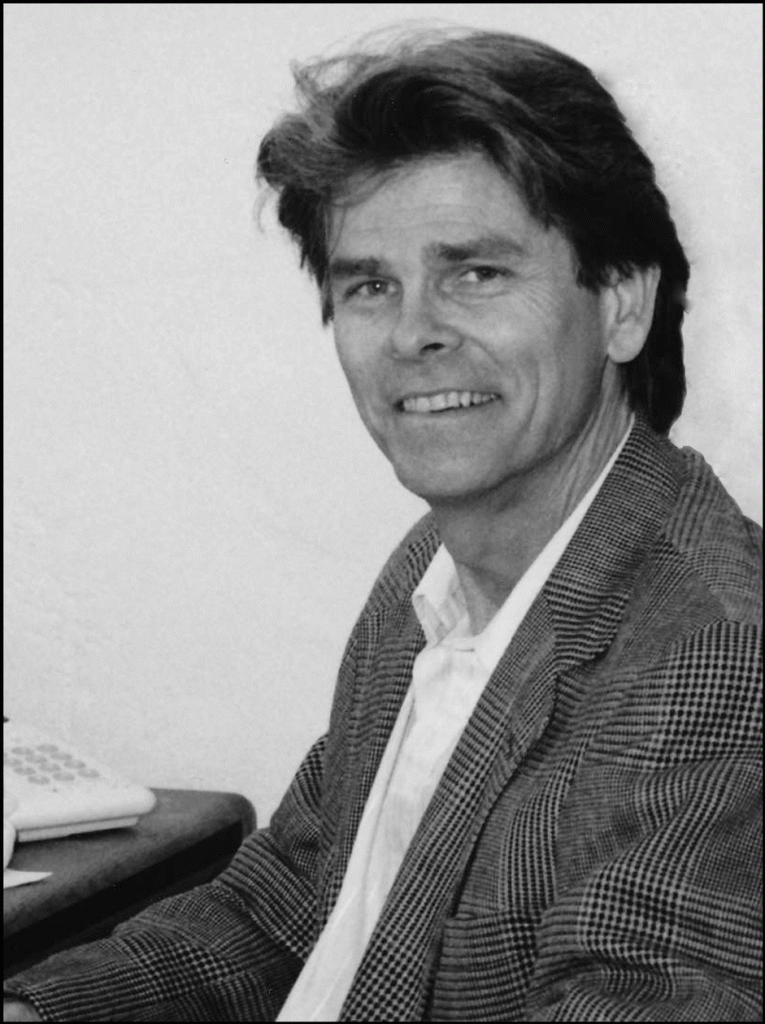
A George Carmichael portrait of LK at Tujunga House in 1994. Two images from this session would be used in Custer and the Cheyenne: George Armstrong Custer’s Winter Campaign on the Southern Plains (Upton and Sons Publishers, 1995). This image, along with others, has been exiled to obscurity for decades only to be recently found. It was taken in the Tujunga House computer room, and the desk still exists. If the photo was taken today, framed images would be seen on the wall in the background. (photo Louis Kraft 1994)
On that same May 23rd it finally sank in that Weston walking on both Motor and Pico was wrong as it was just too long of a walk. This realization sent up a red flag and I started to study maps again. Maps showed no businesses and I moved to the Google maps that are aerial photos. The entire area is totally residential. No businesses, and I kept moving south and west, … and I passed the Beverly Hills Country Club.
Before saying what I saw, I had sometime in 2014 questioned people watching golfers while eating at the Beverly Hills Country Club and Bob confirmed that this was true and that they could. Beginning with chapter 8, the Beverly Hills Country Club plays a major set piece in the story, and it is often listed as the “Beverly Hills Country Club, Cheviot Hills, California” in the three-line subheadings to the chapters. The Beverly Hills Country Club is instrumental to the story, and it has been in place since I partnered with Bob. I can’t tell you how many reviews Bob Goodman has performed, but there are a lot—five, or maybe six.
When I discovered the Motor/Pico error I began looking for information. … The Google aerial photo of the Beverly Hills Country Club shows that this club offers tennis and swimming. Going to their website I learned that it opened in the mid-1920s and that Errol Flynn, among other film celebrities, often frequented the club. This makes sense as Flynn was a great tennis player and often paired with Bill Tilden and other tennis pros of the 1930s and 1940s or played against them in single competition. Also, Flynn loved to swim and did until his death.

This is John McGirr, MD. He became my family doctor when my parents moved from New York to California and settled in Reseda about 1954. His office was originally in Encino but would eventually move to Tarzana, named after novelist Edgar Rice Burroughs most famous character, Tarzan of the apes. He was a physically fit man who loved golf, and was a good golfer. This image of him was taken at the Calabasas Country Club. I knew the club intimately as Dr. McGirr would become my father-in-law (1971) and would remain so until his death in 1987. I don’t know who the other two people in this photo are. (photo © Joan McGirr 1970s)
You can’t watch golfers while eating at the Beverly Hills Country Club. Period!
More digging, and guess what—sometime in the past the Beverly Hills Country Club partnered with the Calabasas Country Club, which is in the hills south of Ventura Boulevard on the west side of the San Fernando Valley. I know this country club, as my father-in-law, John McGirr, MD, was my family physician since the mid-1950s. Dr. McGirr remained my physician until shortly before he died in 1987. He was a major physician in the San Fernando Valley until his retirement about a year before his death. He was a great golfer and a member of the Calabasas Country Club (which opened in 1968). The club had a minimum amount that a member had to spend in the restaurant each month. I don’t know what that minimum was, but probably six times a year my ex-wife and I would join McGirr and his wife for dinner at the club. Great food.
The above was not a small blip on what I thought would be a polish of the manuscript, for it now required a major rewrite by me, which also included Doris Goodman’s three comments: 1) Make one of the doctors 62 and not 52, 2) Reduce the amount of the Spanish dialogue, and 3) Allow the leading player to have two drinks at the end of the story. Doris’s comments are valid. The doctor aged by 10 years, but I had to be careful that this played forward smoothly. The Spanish I dealt with as I saw fit. My reason: I didn’t want to write cliché gang members (read: Evil people). Instead, I wanted the golf pro to deal with his situation and a foreign language, which in itself can be frightening when a person doesn’t know what is being said. As for the leading player drinking at the end of the story, it meant a major rewrite of his wife and unfortunately not a satisfactory answer to alcoholism. I came up with what I considered a decent fix here, and hopefully Bob and Doris will agree.
Two deadlines with dates
I have a contract with OU Press to deliver the Sand Creek and the Tragic End of a Lifeway manuscript on 1oct2016 (and it included a nice advance). Luckily progress is being made with both research and writing.

Art of the tower of the great building that became the Southwest Museum in Los Angeles, California. (art © Louis Kraft 2014)
That said, photocopy requests of the research I performed at what will soon be the former Braun Research Library at the Southwest Museum in June 2014 still hasn’t arrived. Although staff worked on my copy requests during my 12-day visit, the estimated date of delivery is now August 2015. That says it all, other than to add that my thoughts aren’t printable. This is not good for me, but that’s life and I must roll with the punches (and excuses). I have another delivery almost a month earlier—Pailin’s and my application for her permanent Green Card. This will require a lot of work by LK and Pailin, and there is no room for error. I know how much effort it took both of us to land Pailin’s initial two year (but temporary) Green Card in September 2014, and I know how much of our time will be devoted to the September 2016 meeting with U.S. Immigration. Failure is not an option. … Unfortunately, when Immigration set the second Green Card deadline, the Sand Creek deadline was already in place (honestly, I don’t think I’ll be sleeping the entire summer of 2016).
Back to The Discovery
I’m sorry, but I’m not the happiest person at the moment for during the rewrite, which was supposed to be a polish I made the Beverly Hills Country Club discovery (which unfortunately has been in place since before I came on board). This, along with a vodka discovery, which like the Beverly Hills Country Club I didn’t research as I had mistakenly thought that Bob had his facts correct here. … I checked a lot of the words and locations for historical and factual accuracy but I didn’t check the club or the vodka. That’s on me (hell it wouldn’t have been more than an hour or two of work, but I didn’t do it). I’m glad that I discovered the country club error and that Bob’s daughter-in-law, who wasn’t on the reviewing list (a surprise to me) pointed out that the vodka in the manuscript didn’t exist yet. If ever I meet her, she is going to get a big hug from me.
I still need to perform a polish, and that will begin on July 3 as I need time and space before reviewing the manuscript again. With luck I’ll get through 50 pages per day, which means that the polish will take approximately 10 days. … Fingers are crossed that there are no more surprises.


